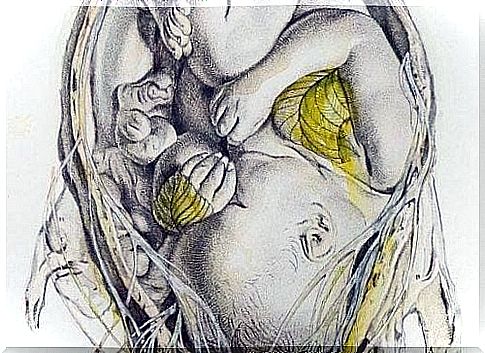How To Have A Normal Vaginal Birth

Of course , every mother dreams of a normal vaginal birth, without complications and unexpected surprises. Therefore, we want to explain here what a spontaneous birth means and which medical aspects define the last phase of pregnancy.
There are at least two types of delivery: spontaneous (normal) delivery and assisted delivery. Everything that happens during the birth of a child affects which category the birth falls into. What type of birth it will be depends on several factors, e.g. how long it takes before the baby is born, the baby’s position in the womb and other possible complications that occur.
What is a spontaneous birth?
Sometimes medical terminology can be confusing. But when doctors talk about a spontaneous birth, they are simply referring to a normal vaginal birth that is initiated by itself and does not cause any major difficulties. However, not all women are fortunate enough to undergo such a “natural” birth. Complications can occur during the last weeks of pregnancy, or even during the birth itself. You can not control or predict everything.
What characterizes a spontaneous birth?
A spontaneous birth – or normal birth – takes place between weeks 37 and 41. A birth that occurs during the 7th or 8th month of pregnancy is therefore not ideal but rather an extreme measure to save the baby’s life. The birth is also started spontaneously, without the doctor identifying any kind of change.
In general, spontaneous delivery is initiated by coordinated and continuous contractions that follow a normal rhythm. A normal birth is also facilitated by the fact that the position of the fetus enables birth in a protruding crown (with the head first).

Assisted delivery: The other side of the coin
In contrast to spontaneous delivery , assisted delivery involves some form of intervention due to complications. These complications can occur from both mother and child. Thanks to modern medicine, however, difficult births are not as much of a concern as they were before and are in most cases easy to deal with.
A difficult birth is characterized in many cases by delays or modifications in the rhythm of the contractions. It is also classified as a birth where obstacles or limitations arise during the withdrawal of the child. Premature birth that takes place to save the baby’s life also falls into the category of difficult or assisted childbirth.
Below we tell you about some factors you can predict, and also some that are unexpected, that can create problems. Many of these can be corrected during pregnancy, while others do not appear until the mother experiences pain.
Complications for mother and fetus
Complications for the mother fall into one of two categories: mechanical or dynamic. When the mother’s bone or soft tissue is the cause of the complication, it is mechanical. For example, when there is not enough space for the baby’s head to get through the birth canal and the vagina.
Dynamic barriers are anomalies around the contractions of the uterus, e.g. if the contractions are weak or extremely strong and dense, or if the rhythm does not follow a fixed pattern.
So we also have complications that have to do with the fetus itself. The most well-known example is when the child is in a seat. This means that the baby’s rear end is against the birth canal instead of the head. In these cases, doctors almost always choose to perform a caesarean section.

Is there anything I can do to guarantee a normal vaginal delivery?
Many things can happen when you are about to give birth. Therefore , doctors recommend several measures to prevent labor difficulties :
- Note your contractions. It does not matter if the pain and contractions last for several hours or days. You need to observe the timing of all your contractions to make sure they are rhythmic, continuous and unmodified.
- Keep being positive. A positive attitude can help you get through the birth without complications. Therefore, try to stay calm and do not let your worries take control of you. It is important to have the support of your partner and family.
- Find maternity positions that work for you. Many doctors allow mothers to change position freely up to the minutes before the birth itself takes place. It gives the mother the opportunity to find different positions that reduce pain and discomfort.
- Block the pain. If the problem is mechanical, you can have your doctor give you a painkiller. This is not the most natural thing, but it will facilitate the birth of your baby, and it should be your top priority.
- Be sure to go on all your visits to the midwife at the end of the pregnancy. Every meeting with your midwife is important, especially during the last weeks. Should any complications arise that endanger your baby’s life, your midwife will be able to identify and treat it.
If there is a complication during childbirth, do not be afraid. Your doctor has seen everything before and knows exactly what to do. What is important is that you focus on the arrival of the new love in your life.









